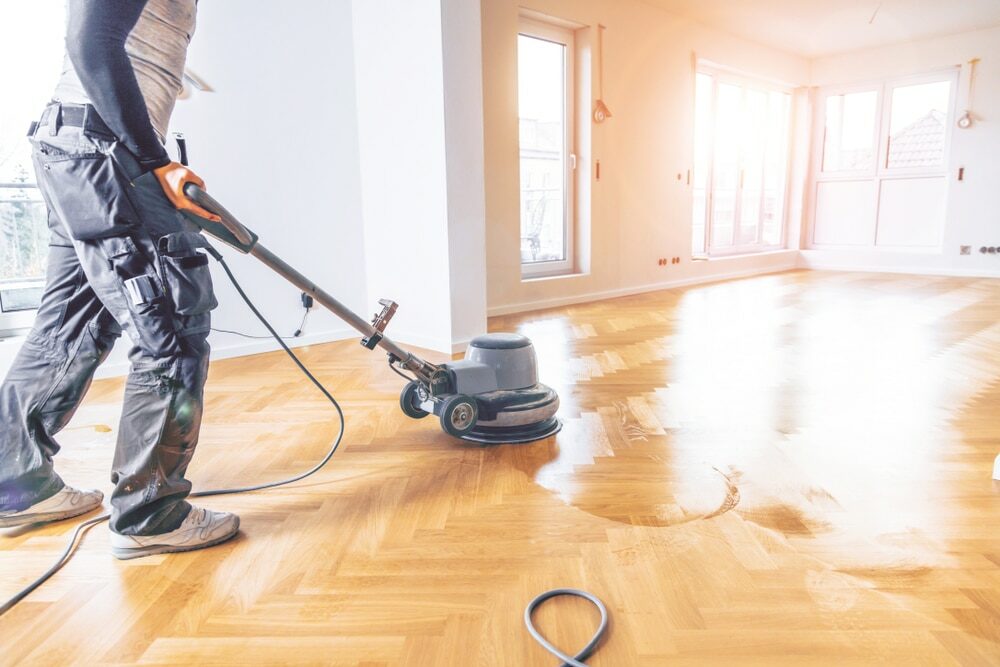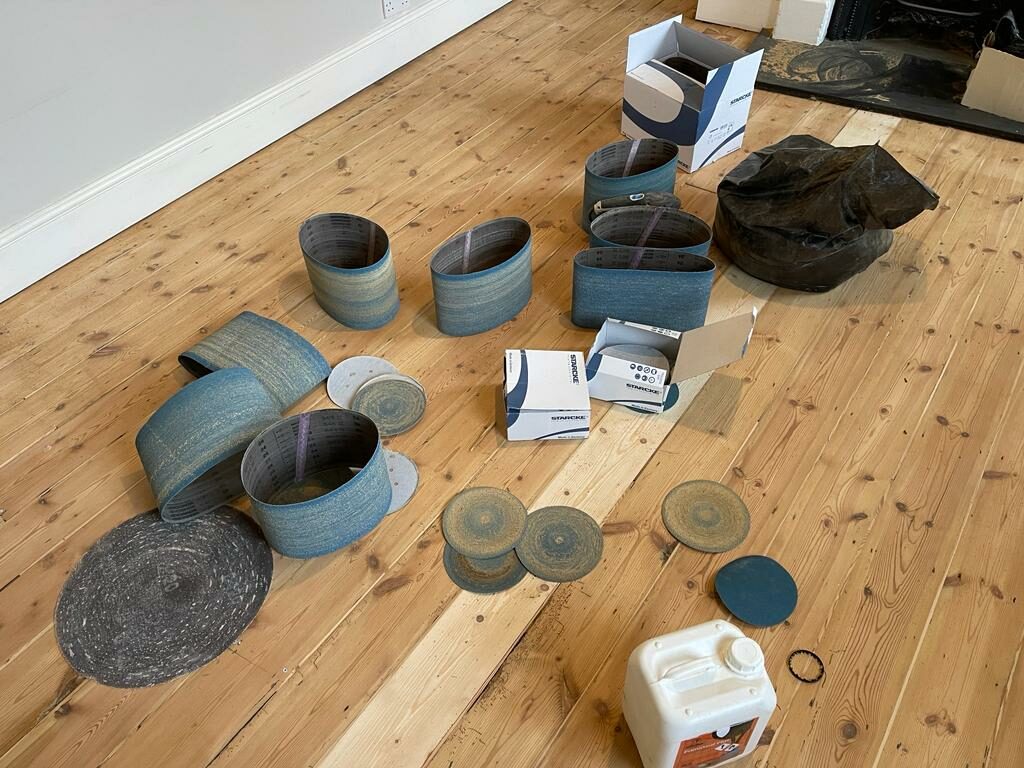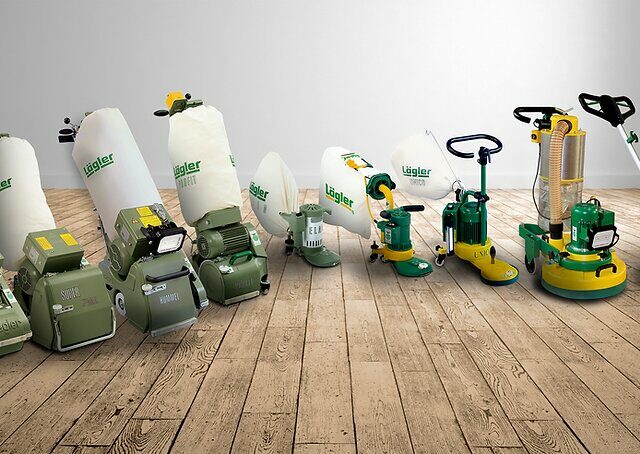London:
Nationwide:
The History and Evolution of Hand Scraping Floors
Posted on August 30, 2023
Floor sanding techniques
The Timeless Art of Hand Scraping Floors: A Journey Through History
Walking across an elegant wooden floor, with its gentle undulations and historic character, one might wonder about the history of its making. Hand scraping, an art as old as the wooden floor itself, has gracefully evolved over centuries, intricately weaving itself into the tapestry of home aesthetics. As Phil Dusenberry might have said, the “personality” of a room often begins beneath our feet.
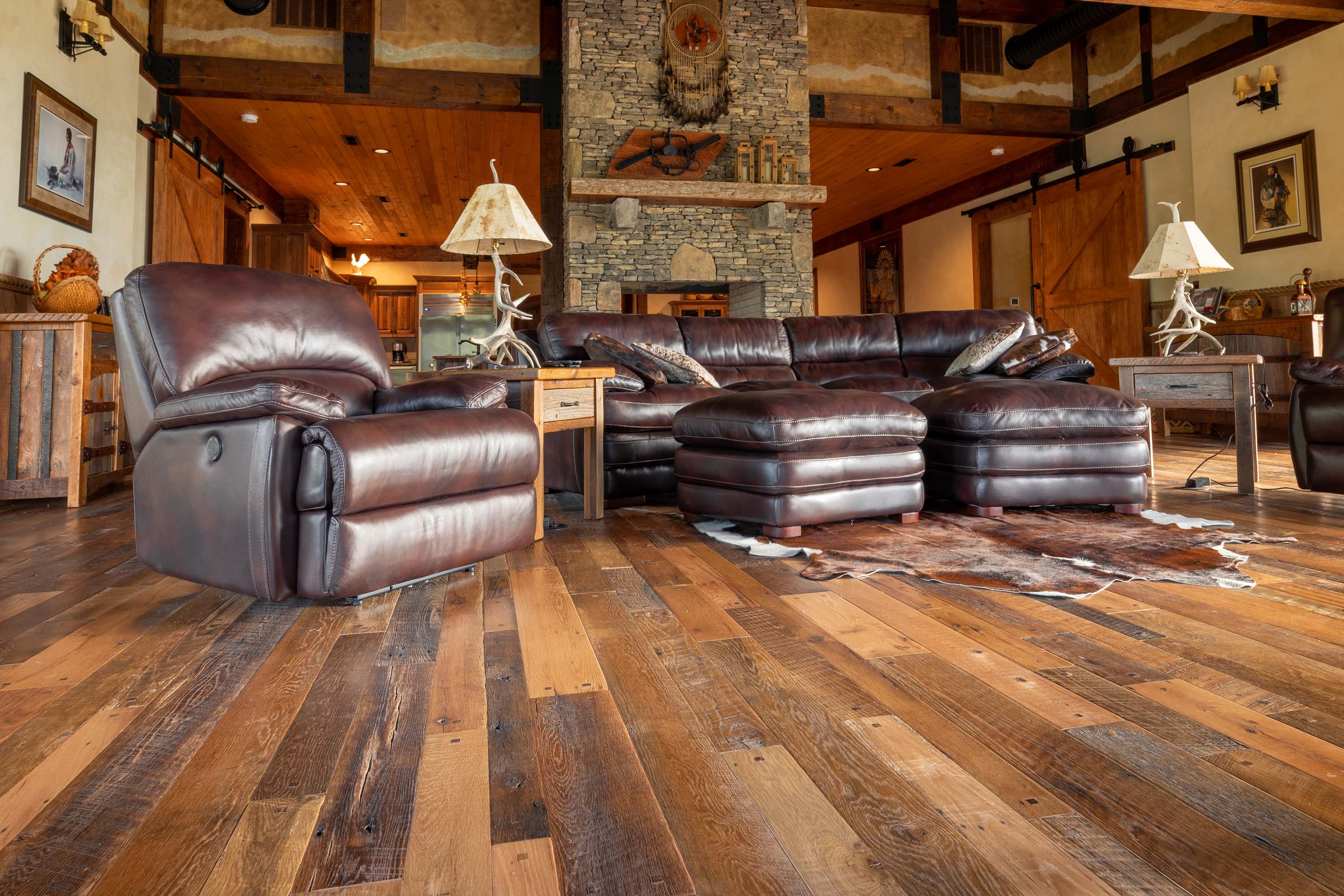
The Origins of Hand Scraping
The tradition of hand scraping can be traced back to Europe, particularly in the large manor homes of England. During the Tudor and Elizabethan periods, when grand homes began to rise amidst the picturesque countryside, wooden floors were a mark of opulence. However, they were far from the sleek and uniform structures we might imagine today.
These original wooden floors weren’t intentionally ‘designed’ with undulations; rather, they were the product of an age before industrial machinery. Carpenters used rudimentary hand tools to flatten wooden planks as best they could, leading to subtle waves and grooves. These, over time, became the hallmark of authenticity, bearing witness to the craftsman’s touch.
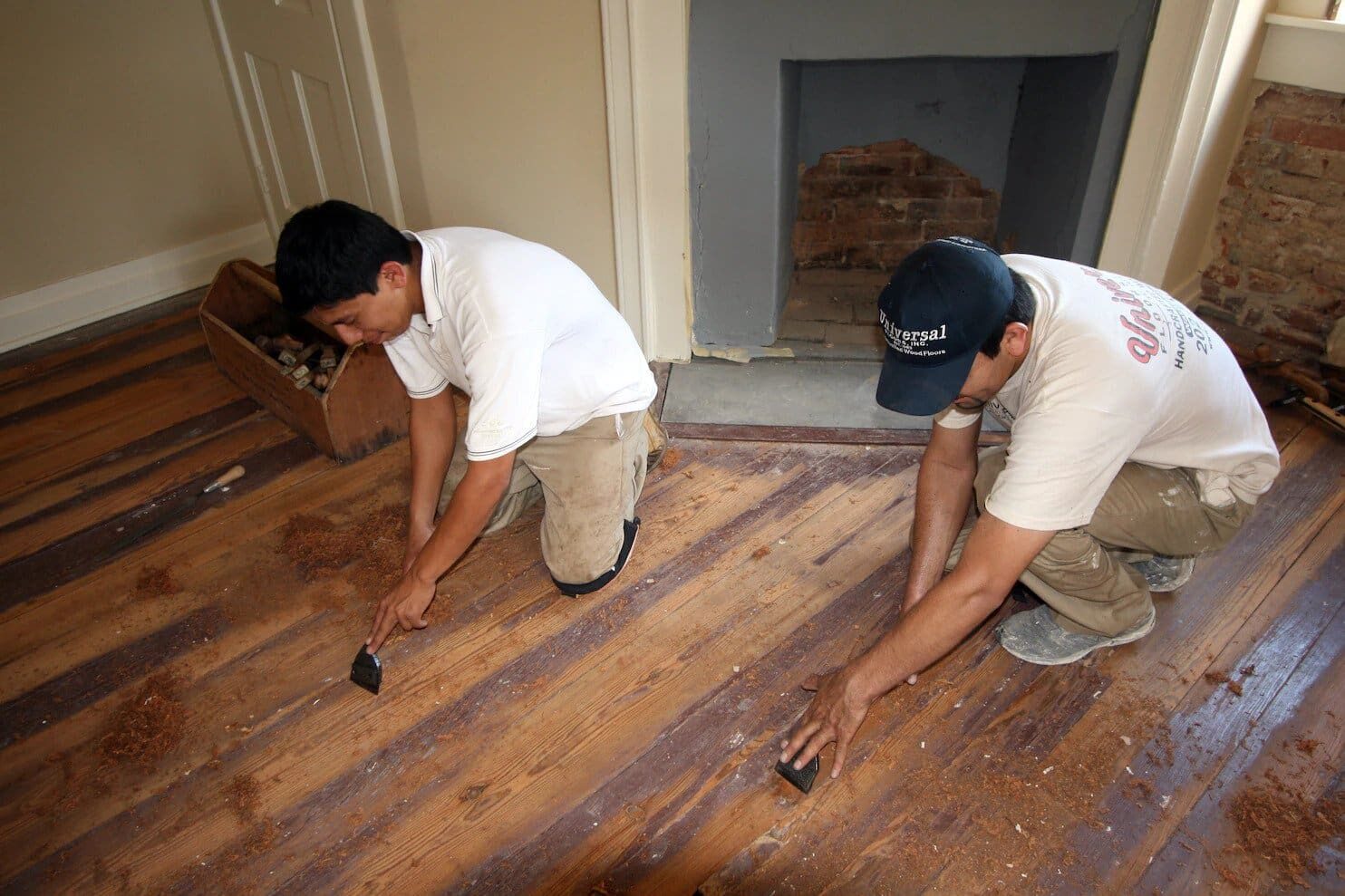
The Tools of the Trade
A key player in this narrative is the humble hand scraper. Essentially, it’s a piece of metal with a flattened blade at its end. The scraper would be dragged along the surface of the wood, shaving off the rough and uneven sections. This tool, in its simplest form, has remained largely unchanged throughout history.
Alongside the scraper, craftsmen employed draw knives and gouges, tools that would carve out particular designs or deeper grooves. They would sculpt, shape, and define the floor, all the while ensuring its durability.
The Industrial Revolution’s Impact
As the wheels of the Industrial Revolution began to turn in the late 18th century, the invention of cutting-edge machinery promised efficiency, uniformity, and speed. The meticulous handwork that once defined wooden flooring was swiftly replaced by machine-cut planks. These new floors were perfectly even and lacked the character of their handmade predecessors.
For a while, it seemed as if the art of hand scraping would become a relic of the past. But, as Dusenberry rightly noted in his reflections on creativity and authenticity, “what’s old can be new again.”
The Revival
The 20th century saw a surge of nostalgia. Homeowners and designers, pining for the charm of yesteryear, began seeking out the authentic touch of hand-scraped floors. The imperfections, once a by-product of necessity, were now ardently desired for their aesthetic appeal.
Specialists in the flooring industry resurrected the age-old techniques, this time combining them with modern protective finishes to ensure longevity. The resulting floor combined the best of both worlds: the historical authenticity of the past with the durability demanded by today’s lifestyles.
Hand scraping today
Modern hand-scraped floors can be genuine works of art. The techniques have been refined, the tools perfected, yet the spirit remains untouched. Each plank tells a story, echoing the hands that shaped it, the environment in which it grew, and the home it now graces.
It’s fascinating to see the various styles available today, from subtle undulations mimicking the floors of old English manors to bolder, deeper grooves inspired by rustic farmhouses. The choice truly reflects the homeowner’s individual narrative and the ambience they wish to create.
In an age where mass production is the norm, hand-scraped floors stand as a testament to craftsmanship and the enduring allure of authenticity. As Dusenberry might muse, they’re not just about looking back but embracing the romance of a story, lived one footstep at a time.
The Artistry of Modern-Day Craftspeople
While the history of hand scraping provides context, it’s imperative to shed light on the skilled artisans of today who have embraced, refined, and sometimes reinvented this age-old practice. These modern craftspeople aren’t simply echoing the past; they’re reinterpreting it for a contemporary audience.
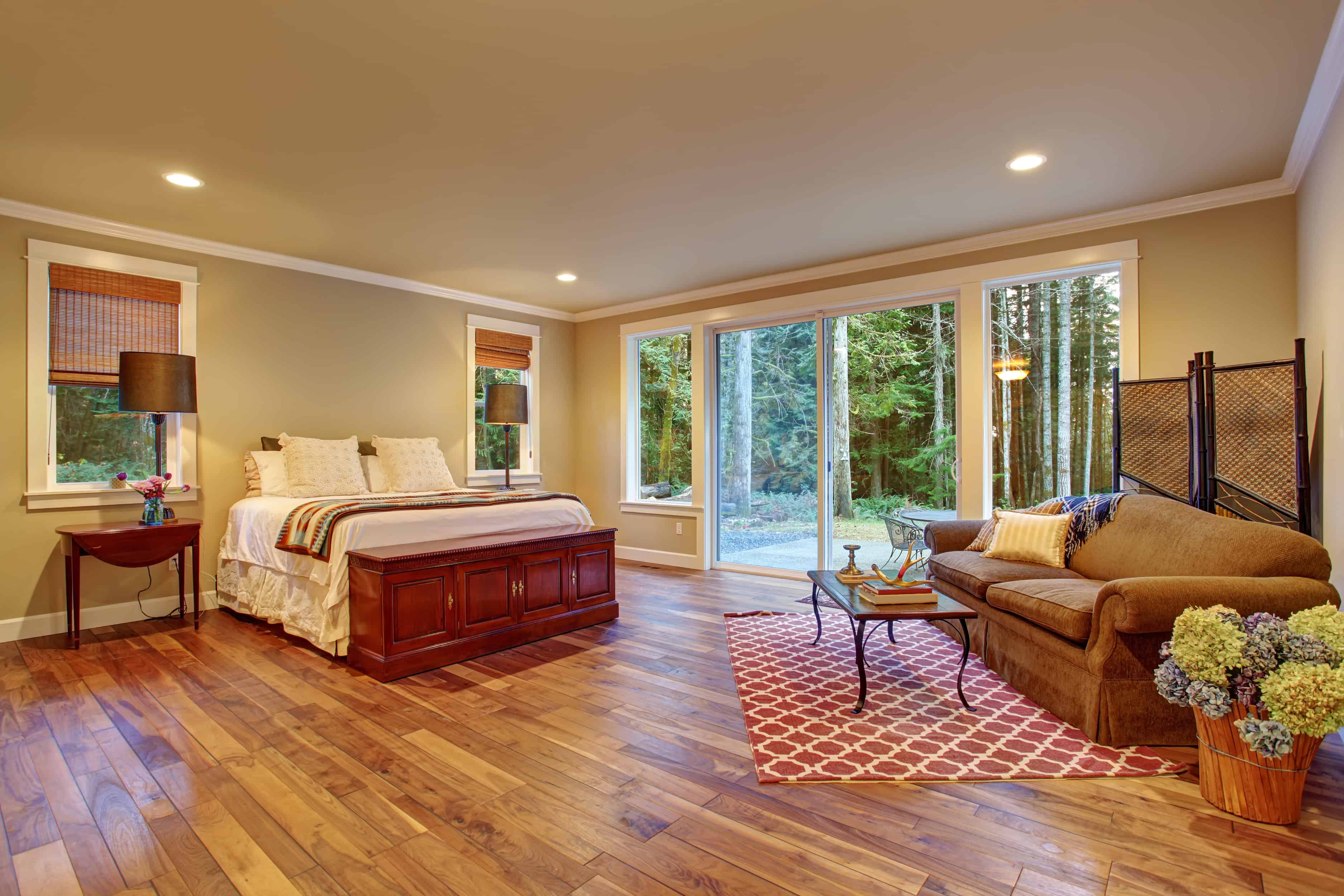
A Fusion of Styles
In today’s globalised world, flooring experts often draw inspiration from cultures far and wide. A craftsman in London might incorporate designs seen in traditional Japanese tatami rooms or the opulent Mughal palaces of India. This fusion creates a floor that’s not just a walkway but a tapestry of global artistry.
Embracing sustainable practices
Modern hand scrapers are not just keeping an art form alive; they’re also conscious of their ecological footprint. Reclaimed wood, sourced from old barns or shipyards, is often the material of choice. Not only does this further the narrative of each floorboard, but it also advocates for a greener planet.
Moreover, the finishes used nowadays are often organic, ensuring that while we delve into the past with the design, we’re simultaneously looking ahead to a sustainable future.
Customization: The Ultimate Luxury
One of the most significant advances in the world of hand-scraped floors is the potential for personalisation. Homeowners can now be part of the creation process, choosing the depth of the grooves, the patterns they wish to see, or even incorporating unique insignias or family crests. This co-creation process ensures that every floor isn’t just a replica of the past but a personal diary of the inhabitants of the house.
Technological Complements
While the essence of hand scraping is rooted in its manual nature, technology plays a complementary role. Advanced tools allow for precision, while protective finishes, developed in state-of-the-art labs, ensure the wood remains impervious to wear and tear, moisture, and the elements. The combination of the human touch with technological advancements creates a product that’s both heartwarming and durable.
By understanding the nuances introduced by modern artisans, it becomes evident that hand scraping is not static as an art form. It evolves, adapts, and continuously reinvents itself, echoing both the whispers of the past and the present rhythms.

In Conclusion
The journey of hand scraping, from a practical solution in Elizabethan England to a sought-after design feature today, is a compelling tale of evolution, revival, and passion. The next time you find yourself on a wooden floor, take a moment to consider its history. For beneath your feet lies not just wood but centuries of craft, tradition, and the very essence of home.
Embracing the wisdom of Phil Dusenberry, one is reminded that true beauty often lies in the details, the imperfections, and the stories that shape our surroundings. In the world of flooring, hand scraping is a glowing testament to that sentiment.
Some Useful Links:
- Stairs Sanding & Refinishing
- Floor Sanding Services
- School Floor Sanding
- Wood Floor Restorations
- Wood Floor Repairs
- Wood Floor Polishing
More from our Blog:
Hand Scraping for New Construction: Adding Character to Modern Spaces
Pros and Cons of Hand Scraping Floors: Is It Right for You?
DIY Hand Scraping: Tips for Refinishing Your Hardwood Floors
Hand Scraping Floors: The Time-Tested Technique for Beautiful Results
Tips and Tricks for Hand Scraping Hardwood Floors Like a Pro
Hand Scraping vs. Sanding Floors: Which is Better for Your Home?
Step-by-Step Guide to Hand Scraping Floors: Tools and Techniques
The Benefits of Hand Scraping Floors: Why It’s Worth the Extra Effort
How to Hand Scrape Hardwood Floors for a Unique and Rustic Look

Sanding
We provide virtually dust-free sanding with our continuous belt machinery with mobile extraction units, giving you a safer environment for your family.
Oiling
This organic finish not only adds beauty to your home but also has exceptional water-repellent characteristics, making it easier to clean and maintain.
Waxing
This natural floor finish offers the softest and most mellow appearance – and leaves your floor able to breath.
Buffing
Using soft buffing machines (and hand-polishing where required) will bring a wonderful sheen to your newly-finished floor.
Repairs
We offer a full assessment of your wooden floors to determine what repairs are needed to provide the perfect working surface for the later stages of sanding, staining and sealing.
Restoration
We offer a comprehensive restoration process designed to address floors that are improperly fitted or damaged over time through wear and tear.
Request a fixed price quote for your wood floor restoration now
Simply enter your postcode below to get started.
Services
Wood Floor Sanding Wood Floor Restoration Wood Floor Scratch Repair Squeaky Wood Floor Repair Parquet Floor Sanding Parquet Floor Restoration Commercial Floor Sanding Church Floor Sanding Community Centre Floor Sanding School Floor Sanding Gap Filling Gap Filling with ResinCopyright © Mr Sander®
Privacy & Cookies Terms & Conditions Complaints Procedure Cancellation Rights Sitemap